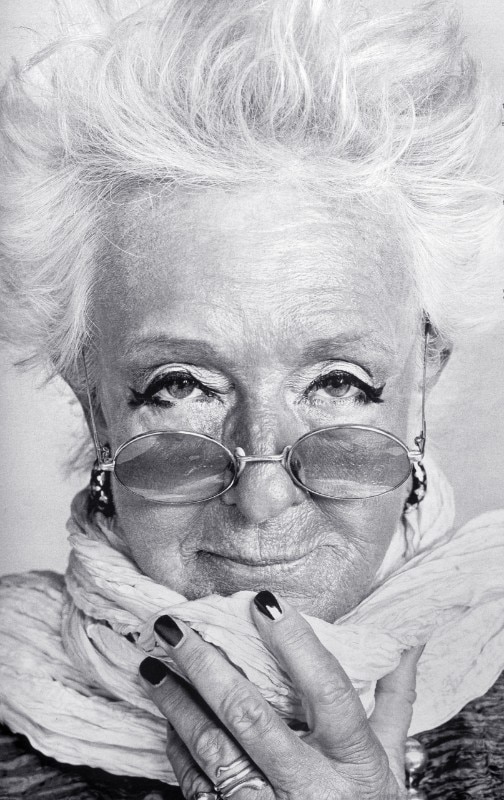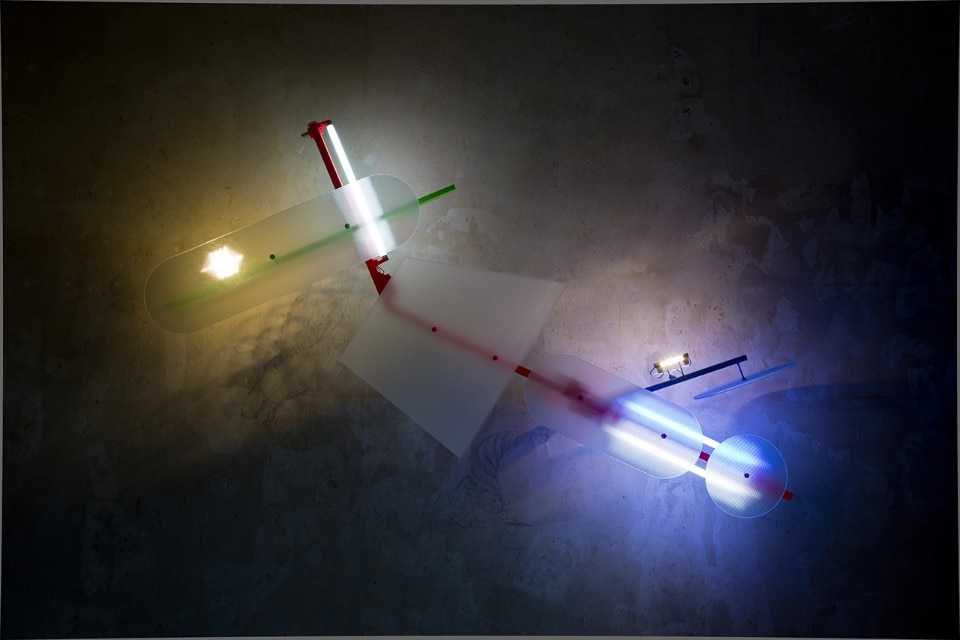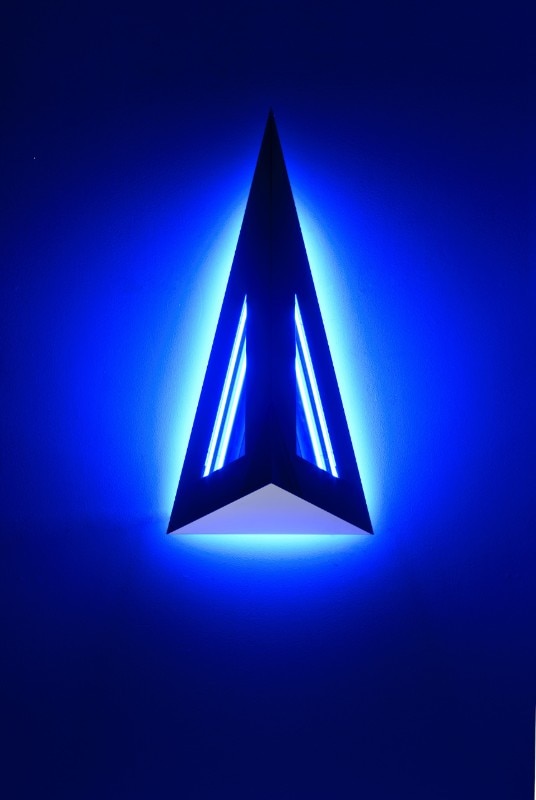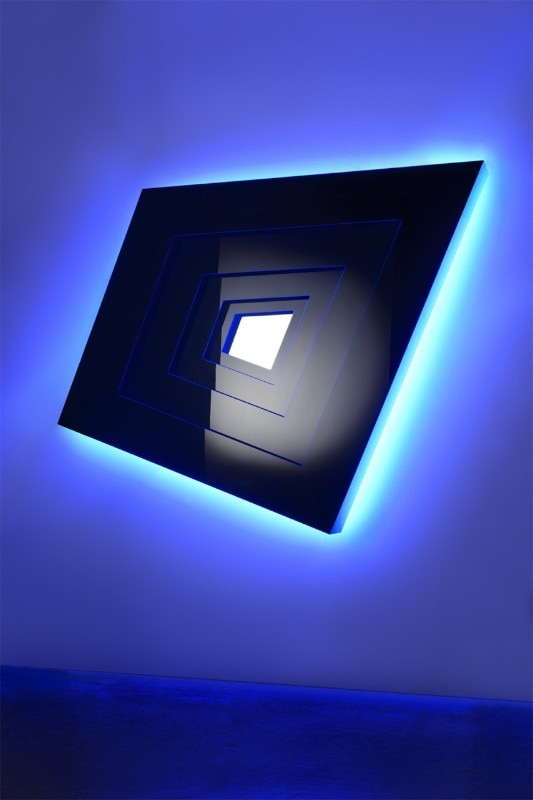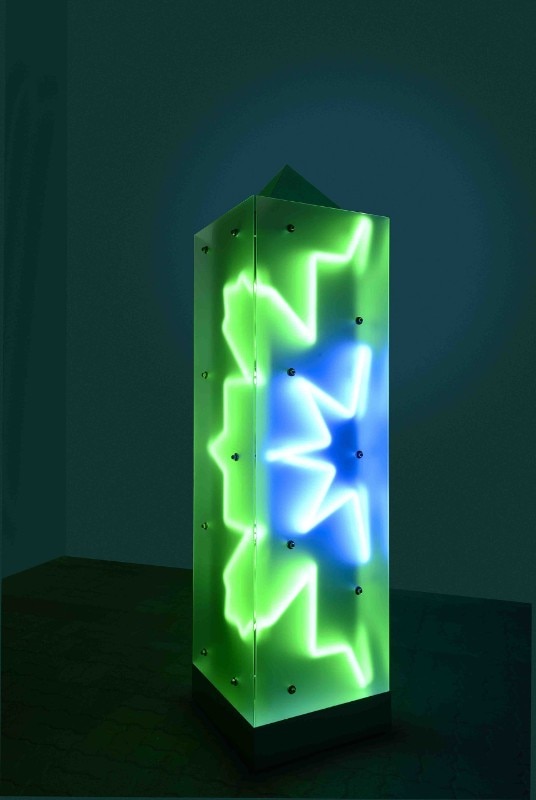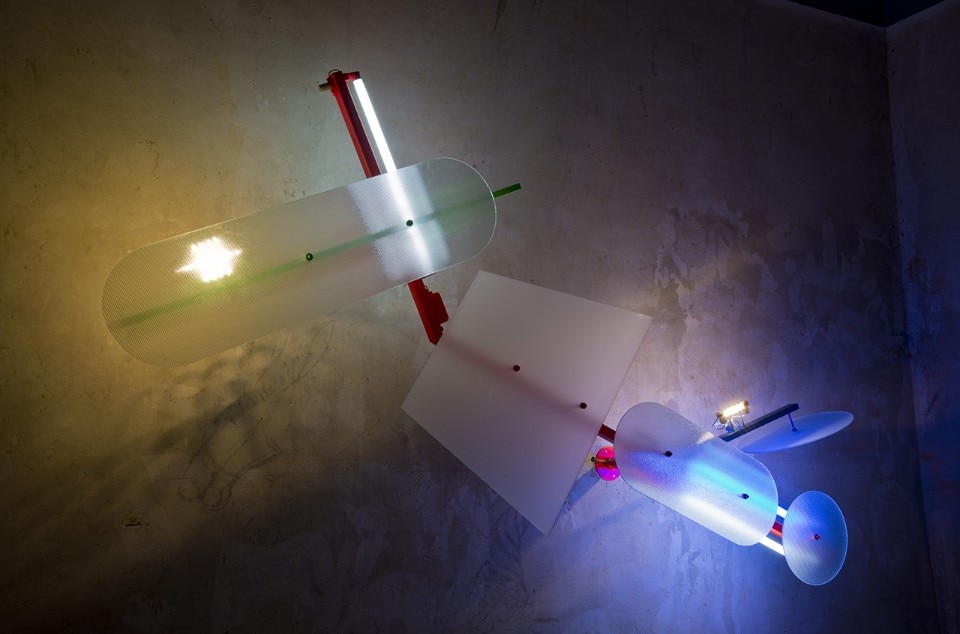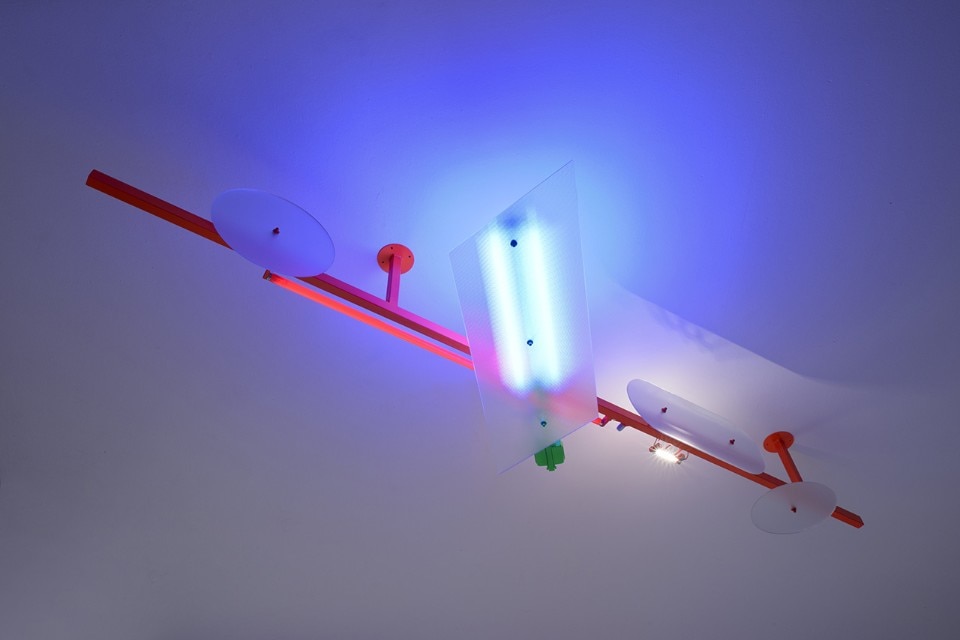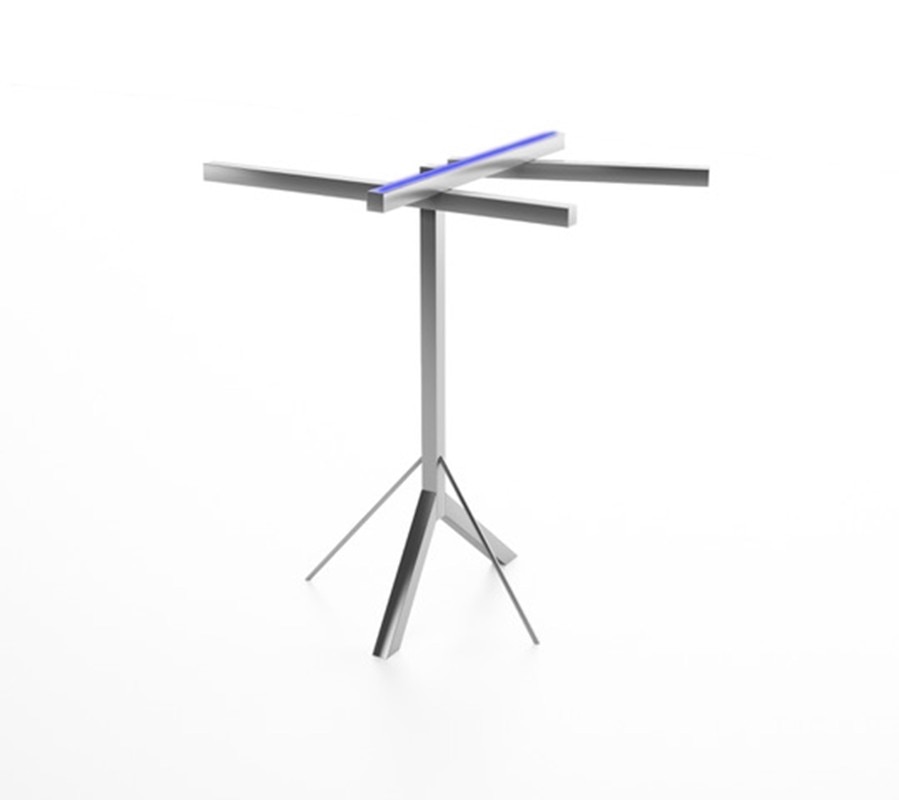The telephone rings. “Hello, I'm a journalist.”. “So, what do you want?”. Architect and designer Nanda Vigo doesn't like to waste time, especially right before Milano Design Week.
She is the architect and gypsy designer of the 1960s and 70s avant-garde to whom the upcoming Salone del Mobile will dedicate a mini solo show at the former Meazza, 5vie space. On display two works from the Goral series of 2005 are totem-like obelisks in neon that conjure elementary signs of a cosmogonal alphabet, while, on the walls, the bright Light Trees sculptures from 1984 are presented thanks to the Archivio Nanda Vigo. For this special occasion there will be a world premiere presentation of “Go with the Light” by Marco Poma/Metamorphosis: a collection of interviews with Vigo recorded between 2005 and 2017, in and around her travels and exhibitions. Moreover, at the Archivio Nanda Vigo located in via Gorani 8, several sculptures titled Deep Space will be on view. Last but not least, this artist – who investigates the millennia-old cultures of various peoples and yet designs spaceships – has teamed up with the Adolfo Carrara Studio to design, SUN-RA, a new lighting collection for JCP.
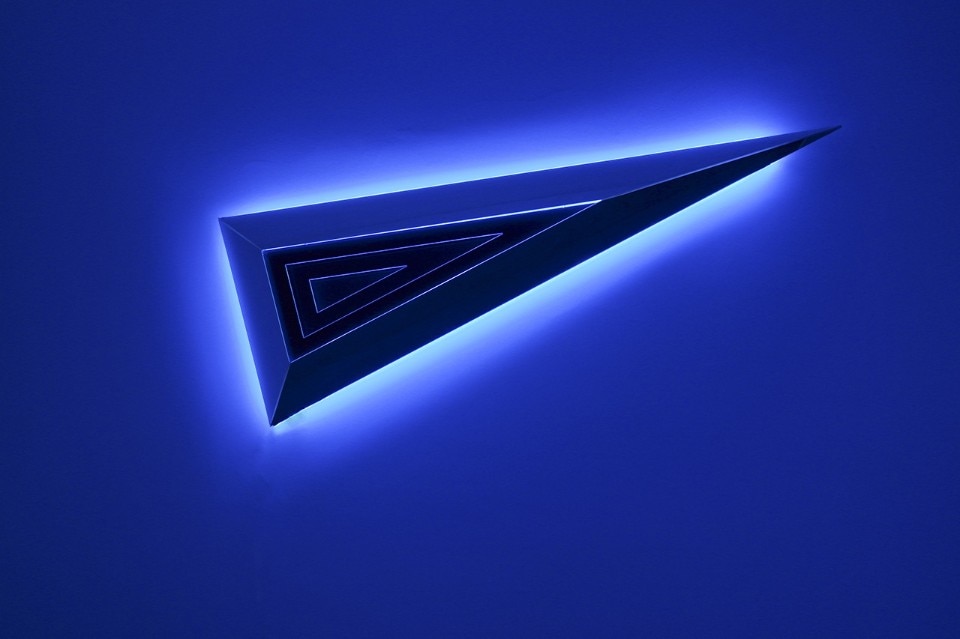
Anyone who has character has a bad character. Or at least that's how it seems.
I am meticulous and have a strong temperament. I always say what needs to be said. And I am proud. You must keep in mind that I, like other women , grew up in a male-dominated culture. No other expression was possible. Either your character emerged or it was a no-go. So, for me, it emerged because of my love for what I do.
Springtimes always come round again, just like the Salone del Mobile.
Today there are famous companies producing objects that have been copied over and over from the originals, especially those made in the 1970s; they are all for producing these objects as long as they are attached to the names of foreign or so-called young designers. If the Salone was a biennial event, there would be more time to re-examine products and to do research.
What is missing in today's design?
A comparison with the past. You can't project yourself forward if you don't know the past directly, without the mediation of Internet. Interdisciplinarity is the word used most frequently but it's one thing to have competent people making disciplines and it's another when an architect is copying an artist. We need to study, that's something no one does anymore. Plus there's the absurd competition. We need to stop and re-align our priorities and, starting from history, try to achieve another aesthetic expression of design.
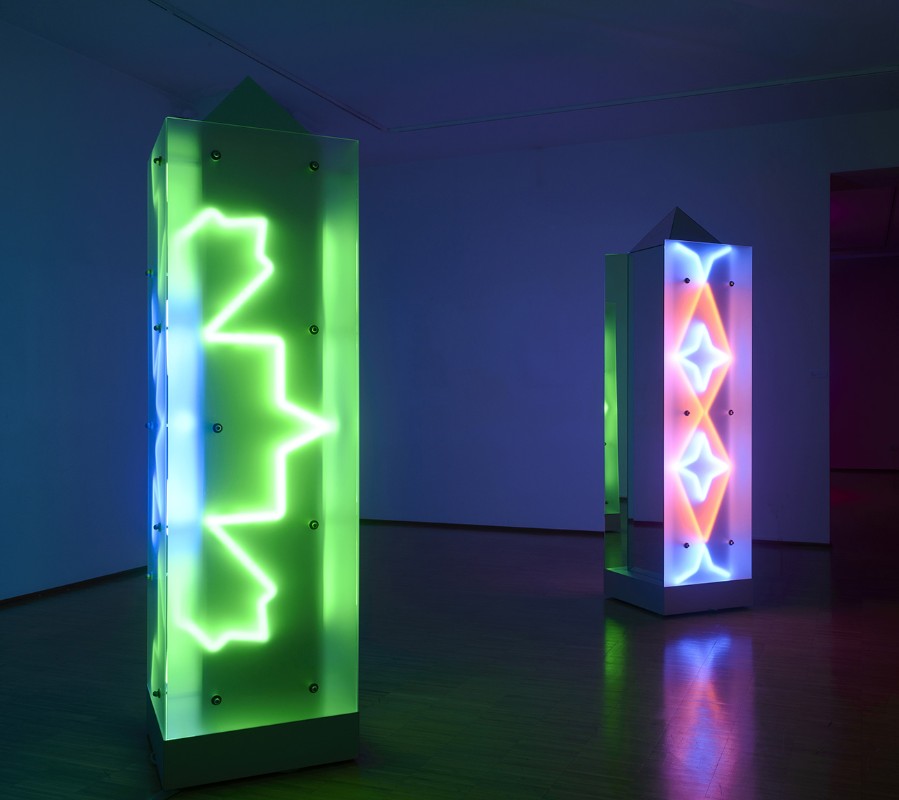
Suppose design is erased and we need to start over. Where would you suggest we need to start anew?
From the social aspects and from the competencies involved. It's such common knowledge that we're lacking in ideas that it no longer warrants discussion. No one wants to work too hard. Do the new generations really think they can only design by computer, using two keys and four lines? We'll never get anywhere doing it like that. We need to pick up the pencil and interact with various other disciplines. We have to get back to the concept, we have to start over using reasoning, putting things up for discussion, for debate. Instead of continuing to open schools and courses of design, it would be better to send the kids to work directly in production. Today everyone is a designer but, in the meantime, the figure of the artisan, our great pride, has all but disappeared.
For years you have worked between design, architecture, and art. Why nowadays do you devote yourself mostly to the artistic works?
Because I have more freedom, I can do what interests me. By contrast, in design, it is always a question of costs and materials and sometimes they cancel your project or that they execute it differently from the original concept. Right from the beginning freedom has been the basis of my career. In my life I run some risks but, without freedom, nothing good can come of it.
We need to stop and re-align our priorities and, starting from history, try to achieve another aesthetic expression of design.
The HangarBicocca has only just closed the show “Lucio Fontana. Ambienti / Environments.” Among the works shown, there was also Ambiente spaziale Utopie, realised by you and Fontana together and shown at the Triennale di Milano in 1964. What kind of person was Lucio Fontana?
He was a very open man, glamorous, chic, smiling and always in a good mood.
Nanda Vigo and her passions. From her lovers in flesh and blood, like Piero Manzoni, to her passions of today.
Passions are deleterious, they are never just “love”, but rather are a complicated vortex of competition, jealousy and violence. If we are speaking about love then I adore African sunsets, the intelligence of the people living in the Mongolian Steppes as well as the infinite knowledge of the Australian Aborigines. And I have loved my companions very much: dogs, reptiles, raccoons and parrots. Not to mention the desert, especially at night-time when you can be very close to the outdoor worlds, and where it is inhabited by the Tuareg or by Peul nomads. Today I can no longer move but the magnificence of the desert is always with me, I see it anytime I want to. That sums it up.
What is the concept of beauty for you today?
It's always a question of the times. The poor man's stool of the sixteenth century has now become an example of great design. Everything changes according to the social system, nowadays thought is global and borders are no longer emphasised; beauty is changing because it is seen globally.
Are there some canons?
If you start talking about canons, then you've started off on the wrong foot: the canon comes into play whenever there's a system. That's why I say that freedom is at the basis of everything.
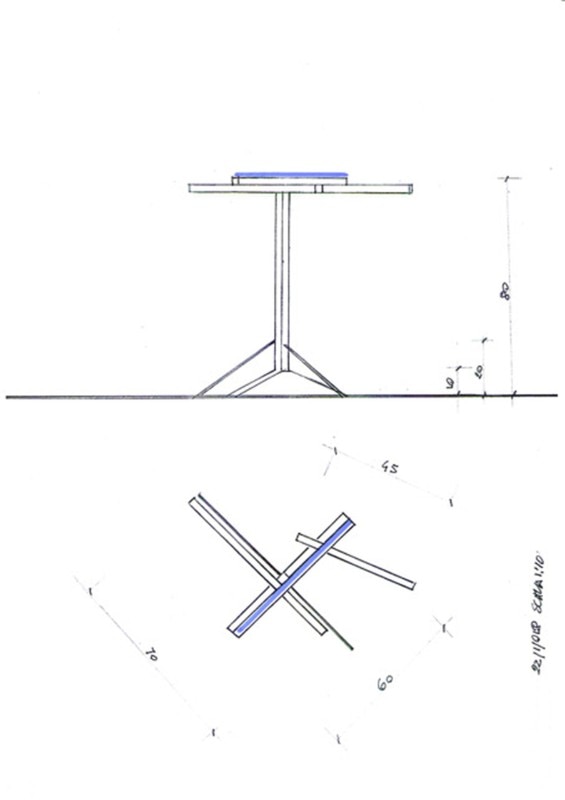
What is your day like?
Unfortunately, due to physical impediments, it's half of what it once was. When I succeed in standing up for awhile, I do one thing after another. I was used to always being present, always being on the construction site. Fortunately now the iPhone exists with its possibility of exchanging photos. Plus I'm alive, which is already a fine result, all the “right” friends of my generation have passed away by now, including my friend Enrico Castellani.
During the Salone you will be presenting SUN-RA, a small collection of lamps designed for the JCP brand.
This is pure design in its concept. I liked Livio Ballabio's idea; the entrepreneur from Brianza, who founded the JCP brand in 2015, wanted to bring together and integrate the experiences of artists, musicians, and designers. At the Salone, they will present their new proposals, which I don't know much about since some of them are still secret. The one certain thing is that they're bound to be fun.
And in terms of design by women, what stage are we at?
Oh Lord, today there's an obsession with exhibitions about women. It's very stupid. In the 1970s I made shows with women but that was after the 1968 feminist protests. We very-few women designers of the Sixties accepted working in a male-dominated field, why should I renege on that now? We have wasted our whole lives living differences , and now some people want to highlight them. It means putting ourselves back in a ghetto situation.
In that case let's say something to women designers living in a male-dominated field, who want to be seen as serious professionals.
First of all, don't opt for having a family. Of course, it can be done but you'll find yourself giving only half of yourself on both fronts. Sooner or later society will change and we'll allow ourselves to hold good positions and to have large families. Or maybe not? Maybe things will change in 50 years' time. It depends on what women want to do because they seem to me to be, for the most part, rather unmotivated.
You don't think it's a question of resignation?
They don't even know what resignation is. If you understand what resignation is, you get a move on and you set about taking care of the issue and that's how you leave it behind you. If you never make a revolution, you'll never change the government.
That seems to me to be an excellent sentence for winding up our interview.
No, wait. Let's finish the interview like this: “Revolucion siempre.”
